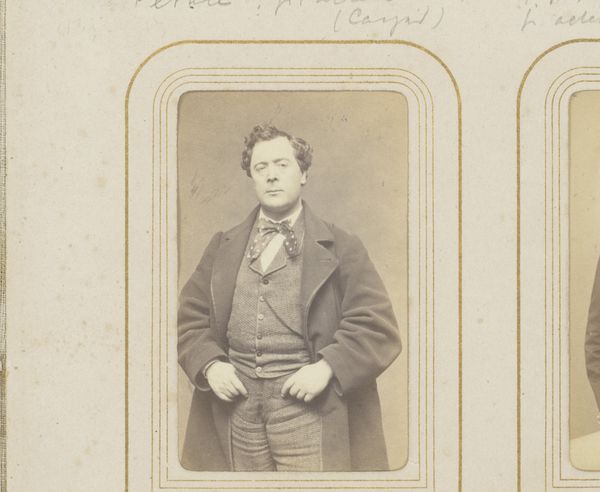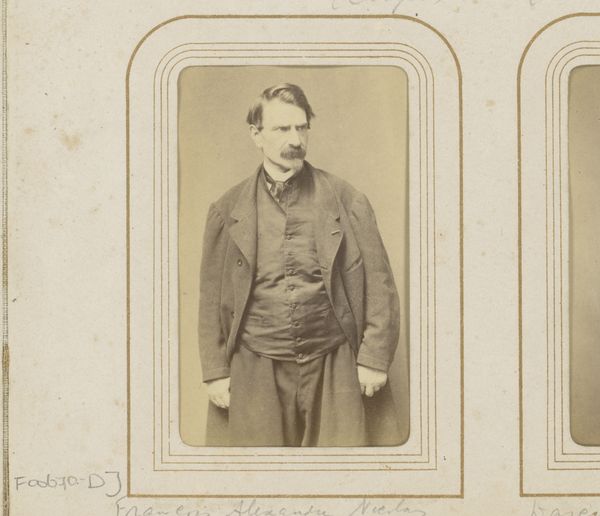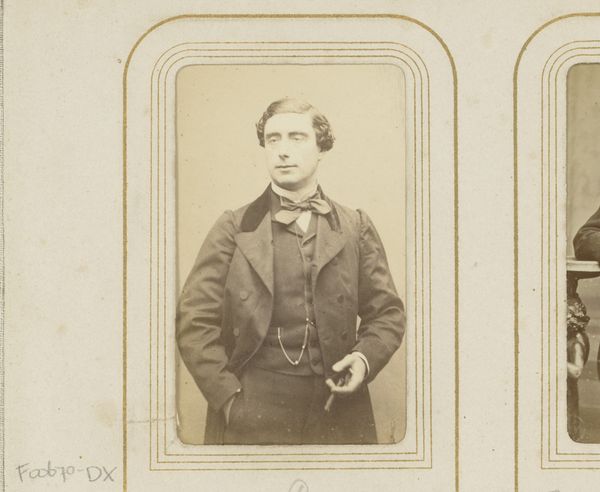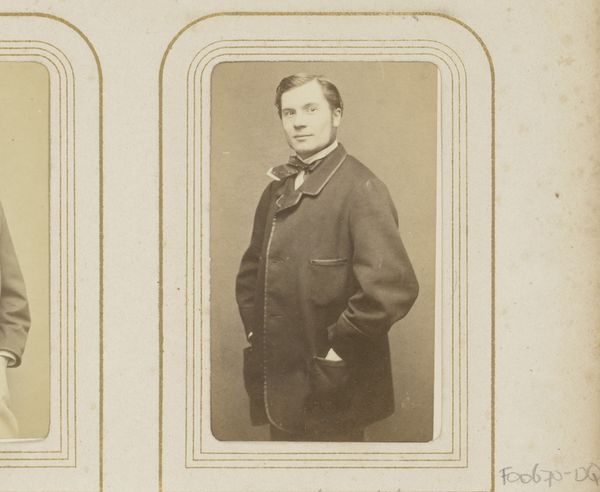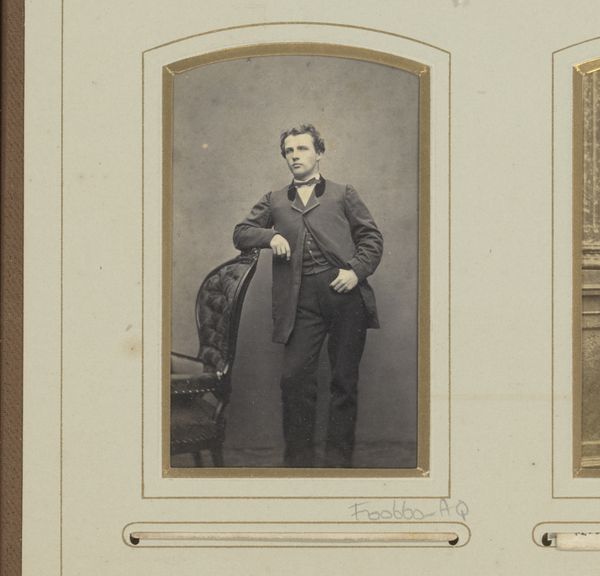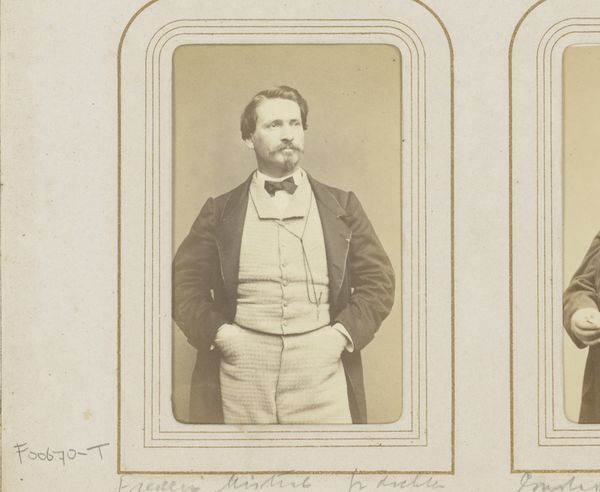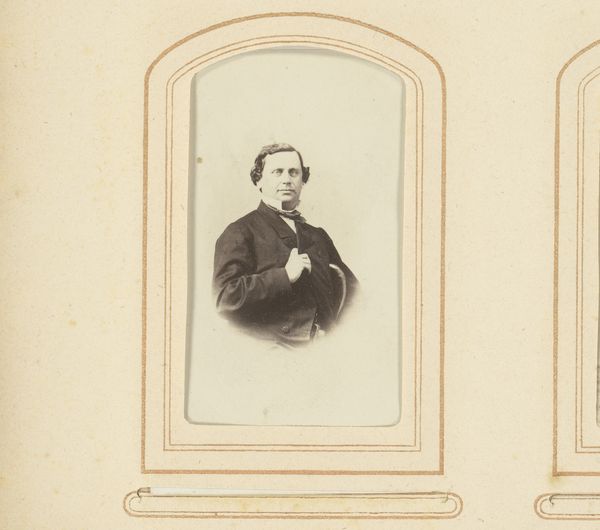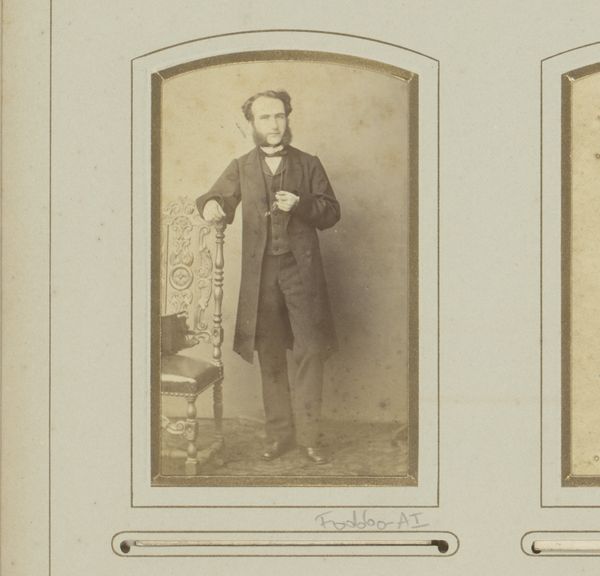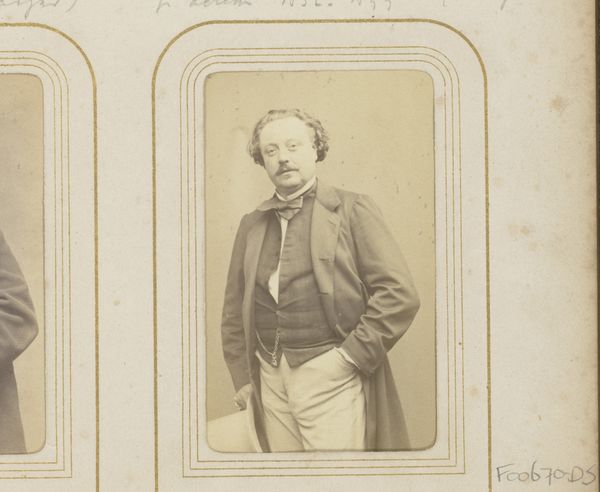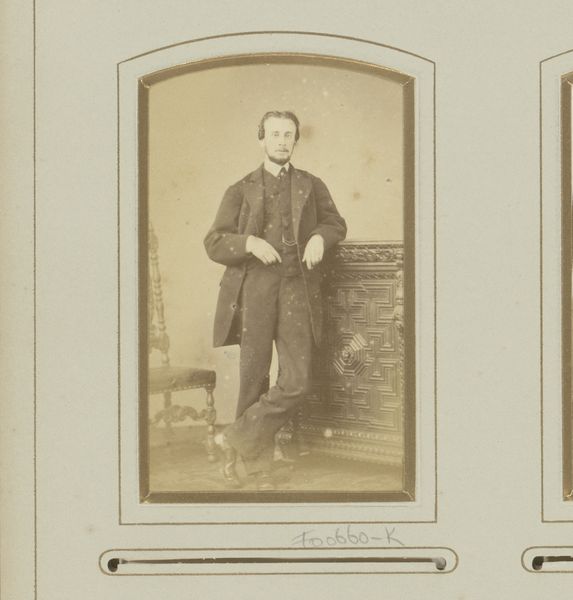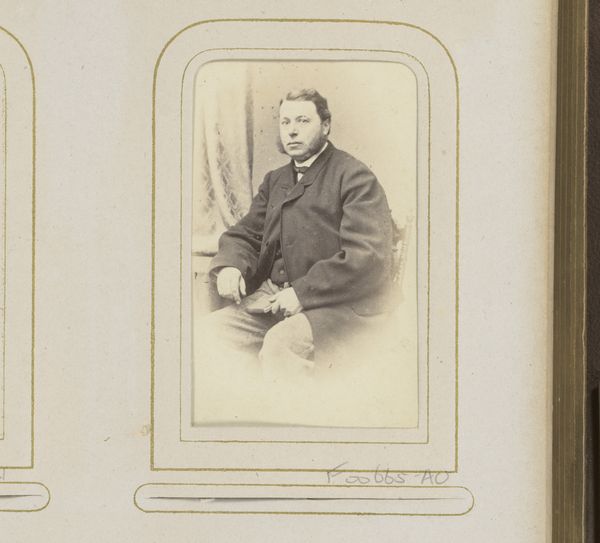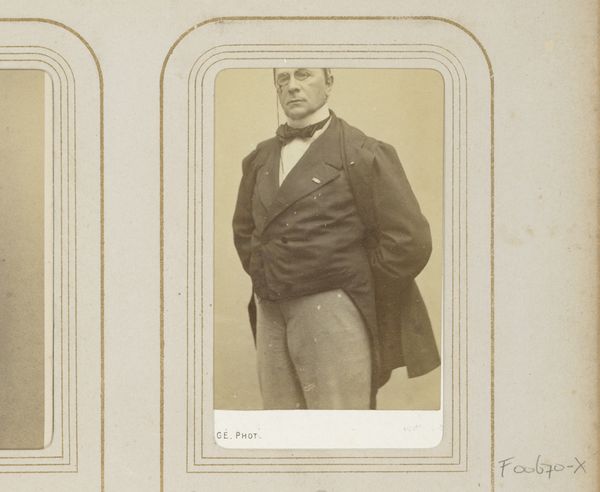
daguerreotype, photography, gelatin-silver-print
#
portrait
#
daguerreotype
#
photography
#
historical photography
#
gelatin-silver-print
#
19th century
Dimensions: height 84 mm, width 51 mm
Copyright: Rijks Museum: Open Domain
Editor: This is "Portret van een man," or "Portrait of a Man," taken sometime between 1861 and 1867 by Carjat et Cie. It’s a gelatin-silver print, sepia toned. He’s in a suit, standing with his hands in his pockets, and his gaze seems very direct. What strikes me is how casual yet formal it feels. How do you interpret this work, especially considering the historical context of photography at that time? Curator: This piece speaks volumes about the evolving social dynamics of the mid-19th century. The advent of photography democratized portraiture, shifting it from the exclusive realm of the wealthy painted elite. This man, dressed in what appears to be middle-class attire, actively participates in visualizing himself for posterity, presenting an intriguing question about self-representation during a period of profound social and technological change. Does his confident, yet slightly melancholic gaze invite us to consider his personal narrative, or does it mainly project an intended social role? Editor: That's a good point about democratizing portraiture. So, do you think his posture, hands in pockets, challenges traditional notions of formal portraiture and masculine representation? Curator: Precisely! The "hands in pockets" pose might signal a subtle defiance of societal norms, an assertion of individuality within the confines of bourgeois expectations. Given photography's burgeoning role in shaping public image and constructing identity, how might this seemingly small gesture reflect a larger discourse around agency, class, and masculine identity at the time? Could it even be read as an early form of sartorial activism, challenging aristocratic conventions? Editor: I hadn't considered that angle before, it makes me think differently about how individuals might have consciously used photography to shape their identity. Curator: These photographs act as material culture through which the negotiation of self occurs. Considering photography through this lens expands our appreciation of what can be revealed by seemingly simple objects. Editor: I'm definitely taking away a richer understanding of photography's complex social role in the 19th century!
Comments
No comments
Be the first to comment and join the conversation on the ultimate creative platform.
